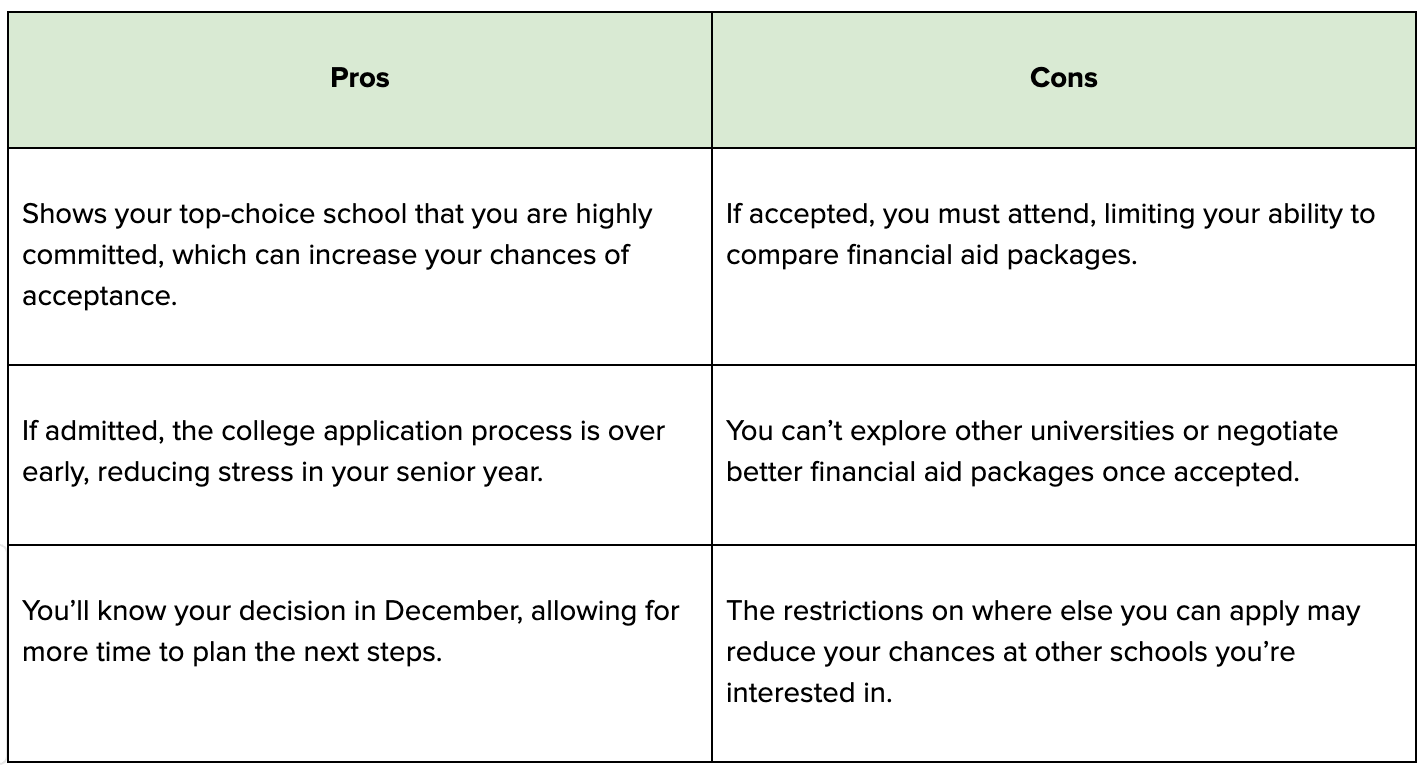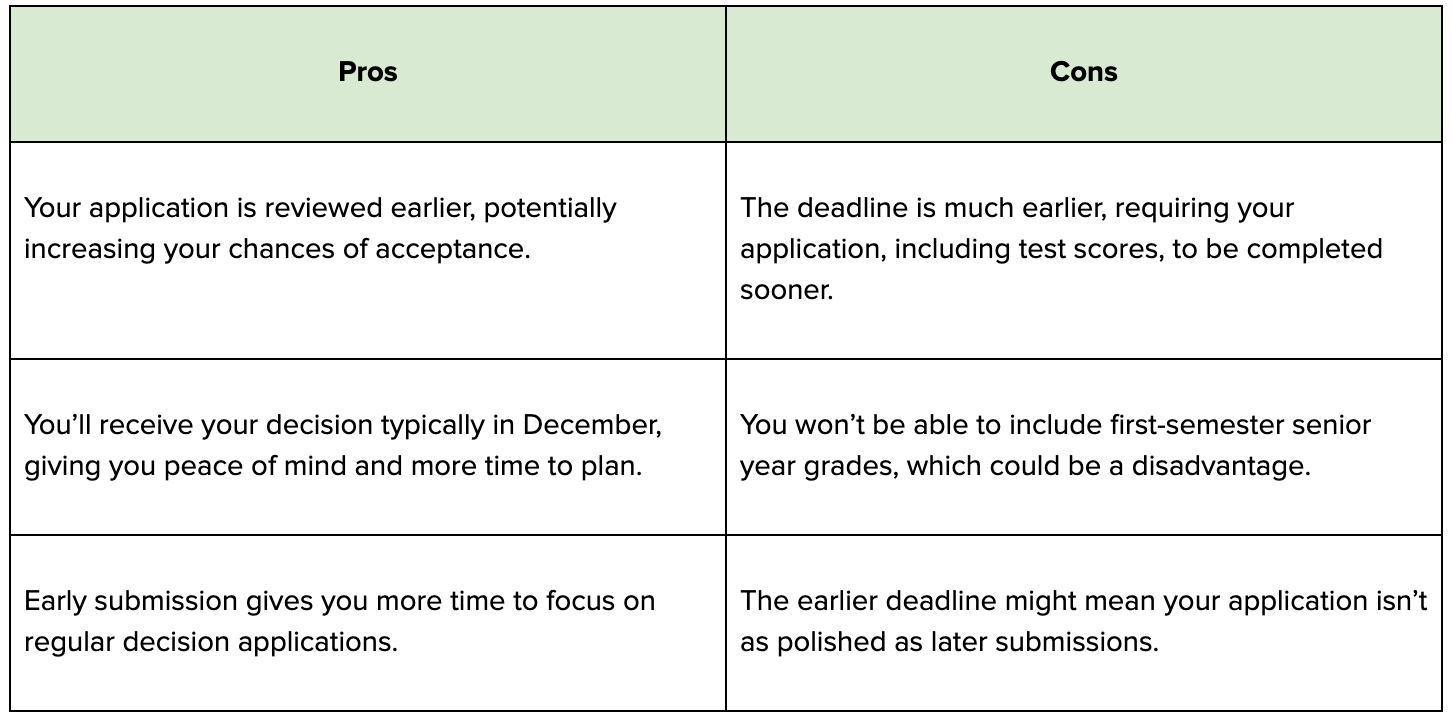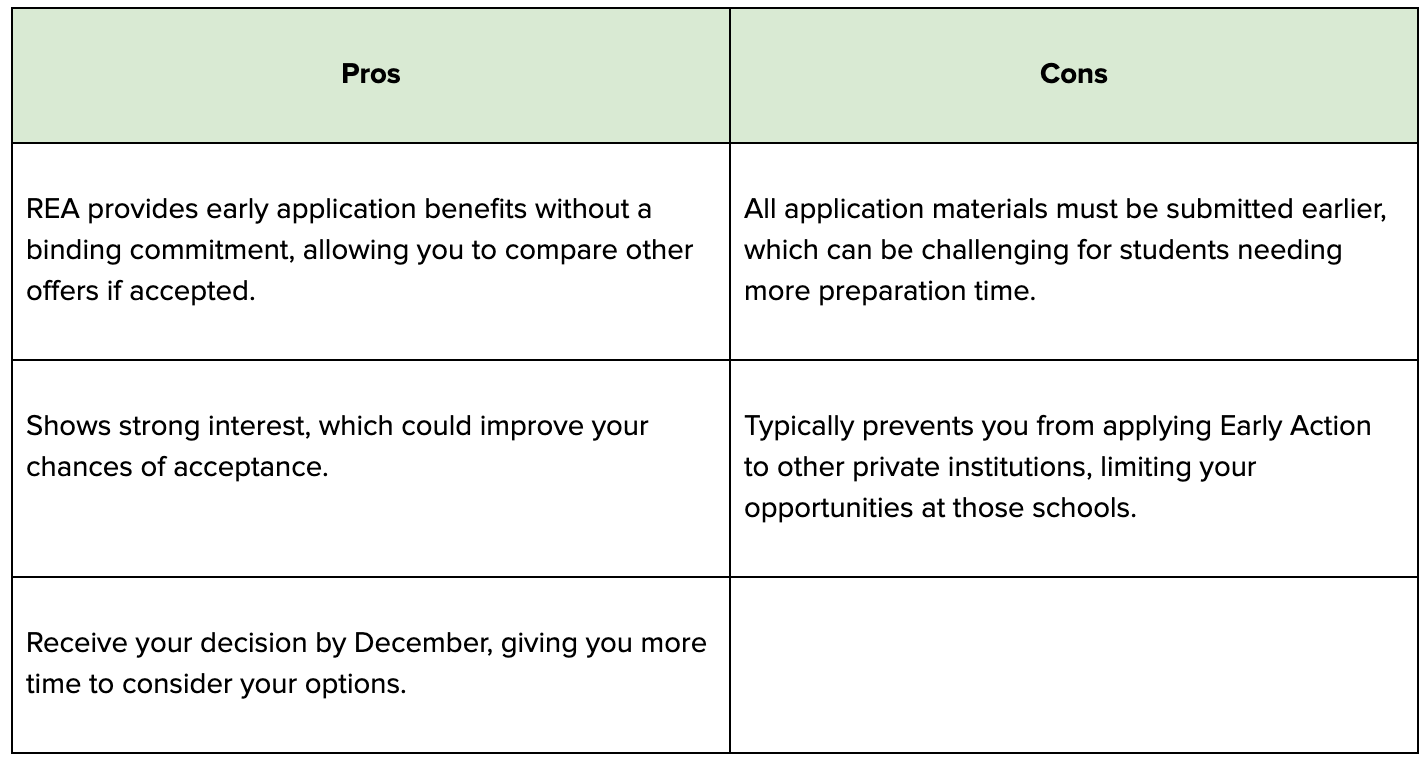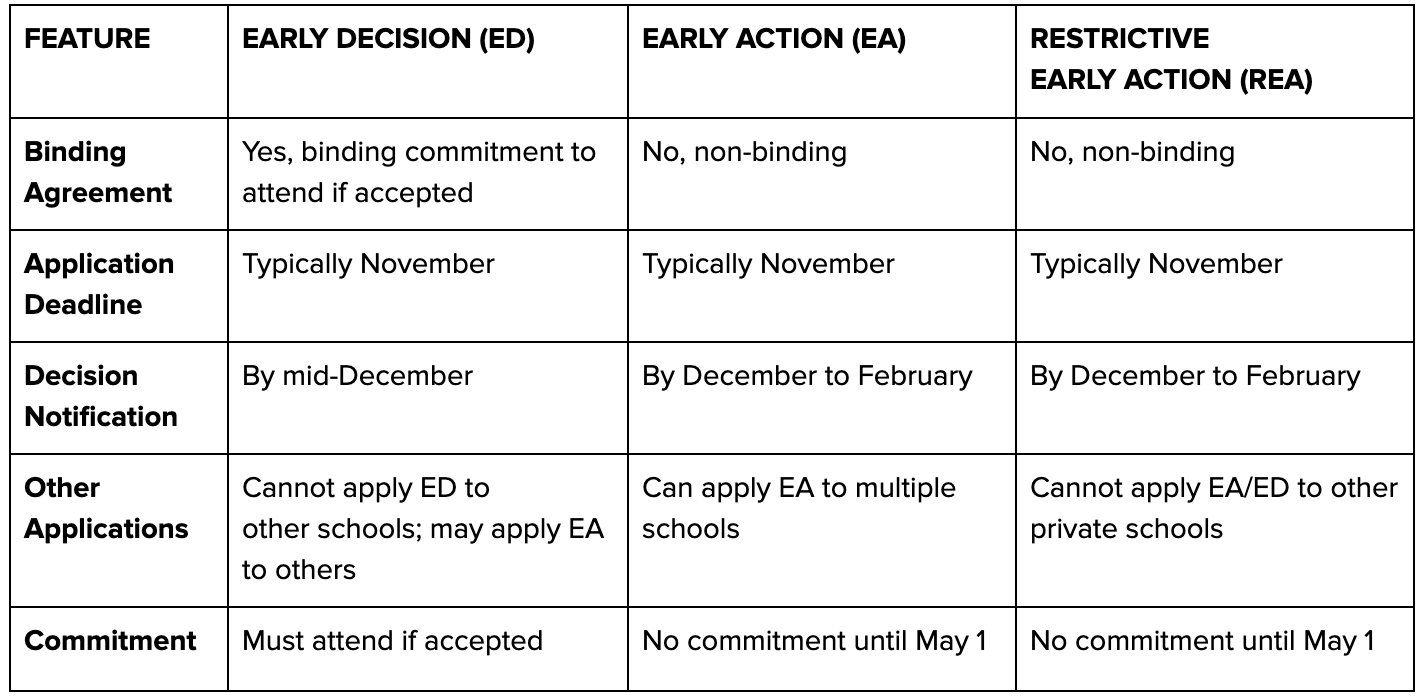ED vs EA vs REA in College Admissions: What's the Difference?
Let's face it: getting into your dream college is a huge achievement, especially when you're also trying to ensure you're starting on the right path for your future. If you're a student who is truly keen on securing a spot at your dream school, having the right knowledge around what to do and where to start will put you at a great advantage.
That being said, you may have come across the acronyms ED, EA, RD, REA, and RA—but what do these mean, and how are they significant in your decision-making process for college admissions?
Let's find out.
How Applying Early Can Affect Your Chances of Admission
One of the biggest advantages of applying early, whether through ED or EA, is the potential boost in your chance of being admitted. Colleges often use early application rounds to lock in a portion of their incoming class before the regular decision period, which can lead to higher acceptance rates for early applicants.
For instance, data from over 300 colleges show that some institutions have a markedly higher acceptance rate for students who apply early. Northeastern University, for example, has an early admission rate of 39%, compared to around 5% during the regular decision period. This significant difference is a clear indicator that applying early can give you a competitive edge, especially at schools that prioritize early applicants.
However, it’s important to note that not all schools offer the same advantages. Some colleges, particularly those with large endowments like Ivy League schools, may not show as much of a preference for early applicants. In these cases, the boost in admission chances might be less pronounced, but it still exists for those with superior applications.
Pros and Cons of Each Application Type

Photo by Ivan Samkov from Pexels
Now let's get into the nitty-gritty of the three early application types: Early Decision (ED), Early Action (EA), and Restrictive Early Action (REA). Based on their titles, you may already have an idea how they work, but it can get confusing. Let's get you right on track:
Early Decision (ED)
Early Decision is a binding option, meaning if you’re accepted, you are committed to attending that school. This option is ideal for students who have a clear first-choice college and are ready to commit.
Pros and Cons of Early Decision (ED)

Early Action (EA)
Early Action allows students to apply early and receive an admission decision earlier than the regular decision timeline. Unlike Early Decision, EA is non-binding, meaning you don’t have to commit to attending the school if accepted.
Pros and Cons of Early Action (EA)

Restricted Early Action (REA)
Restricted Early Action allows students to apply early and receive a decision without the binding commitment of Early Decision. REA offers some flexibility, as accepted students are not obligated to attend, but it comes with specific restrictions on applying to other schools.
Pros and Cons of Restricted Early Action (REA)

A Summary of the Differences Between ED vs EA vs REA

What About RD and RA?

Photo by Tima Miroshnichenko from Pexels
In addition to the early application types mentioned above, you may have also heard of two other acronyms: RD and RA. Here's how they differ:
Regular Decision (RD)
Regular Decision (RD) offers students the breathing room they often need during the college application process. With more time to gather materials, submit first-semester senior year grades, and polish every detail, RD allows students to put their best foot forward.
Another perk of RD is the flexibility it provides. Students aren’t locked into any one school, which means they can explore different financial aid offers and make a decision that best suits their needs.
However, it’s important to keep in mind that RD has its own considerations. Since many colleges fill a significant portion of their class during early admissions, the competition can be tougher, with lower acceptance rates for RD applicants.
Rolling Admission (RA)
Rolling Admission offers a flexible timeline for students, allowing them to submit their applications at any point within the admission cycle. If you apply early and have strong qualifications, you might have a better shot at getting accepted since more spots are available earlier in the process.
One of the best aspects of Rolling Admission is that it's not binding—so you can apply to multiple schools, compare your options, and make the choice that's best for you without feeling locked in. But to really take advantage of Rolling Admission, you'll need to be organized and get your application in early, which means doing some extra planning ahead of time.
Financial Aid Considerations

Photo by Louis Bauer from Pexels
As you approach the decision-making process with financial aid factors to consider, you should be mindful of a few things:
- Applying ED means you’re committing to attend that school if accepted, but this also means you lose the ability to compare and negotiate financial aid offers from other institutions.
- If you're applying early, you must be honest about your financial needs. Some students might be tempted to indicate they don’t need financial aid in hopes of boosting their chances of admission, but this could lead to serious problems if they later find out they can’t afford the tuition.
- If the financial aid package from your ED school falls short, you do have the option to decline the offer. However, this can have negative repercussions, especially for your high school and peers.
- With EA and RD, you have the flexibility to compare financial aid packages from different schools, allowing you to make a more informed decision, especially if financial aid is essential to funding your education.
Common Pitfalls to Avoid
Applying for college is stressful enough—and doing it early to get a few steps ahead of the game can be quite overwhelming. It's easy to feel extra pressure if you are not equipped with the right knowledge and resources to take on this journey just yet.
To spare yourself from added angst, here are some common pitfalls to be aware of:
Pitfall #1: Applying ED Without Certainty
Only apply ED if you’re absolutely sure that the school is your top choice and you can afford to attend if accepted. The binding nature of ED means you’re locked in, so be confident in your decision.
Pitfall #2: Missing Deadlines
Application deadlines for ED vs EA vs REA vs RD vary, so keep track of them and make sure you submit all materials on time. Missing a deadline can result in missed opportunities.
Pitfall #3: Neglecting Financial Aid Considerations
Don’t overlook the importance of financial aid in your decision-making process. Be honest about your financial needs and ensure that you’re applying to schools that offer the support you require.
Pitfall #4: Underestimating the Competition
Even with the potential advantages of applying early, the competition remains fierce. Make sure your application is as strong as possible, regardless of when you submit it.
Finding the Right Admissions Path: Choose What’s Best for You
Choosing the right college admissions timeline can feel overwhelming, but understanding the ins and outs of ED vs EA vs REA, RD, and RA can make all the difference. Each option has its own perks and challenges, so it’s important to pick the one that fits your unique situation—both personally and financially.
At StrivePath, we’re here to guide you through this journey. Whether you’re unsure which admissions route to take or need help navigating the application process, we’ve got your back.
Reach out to us at contact@mystrivepath.com or give us a call at 925-466-3606. We’re here to help you find the college that’s the perfect fit for you, so you can start your future on the right foot!










